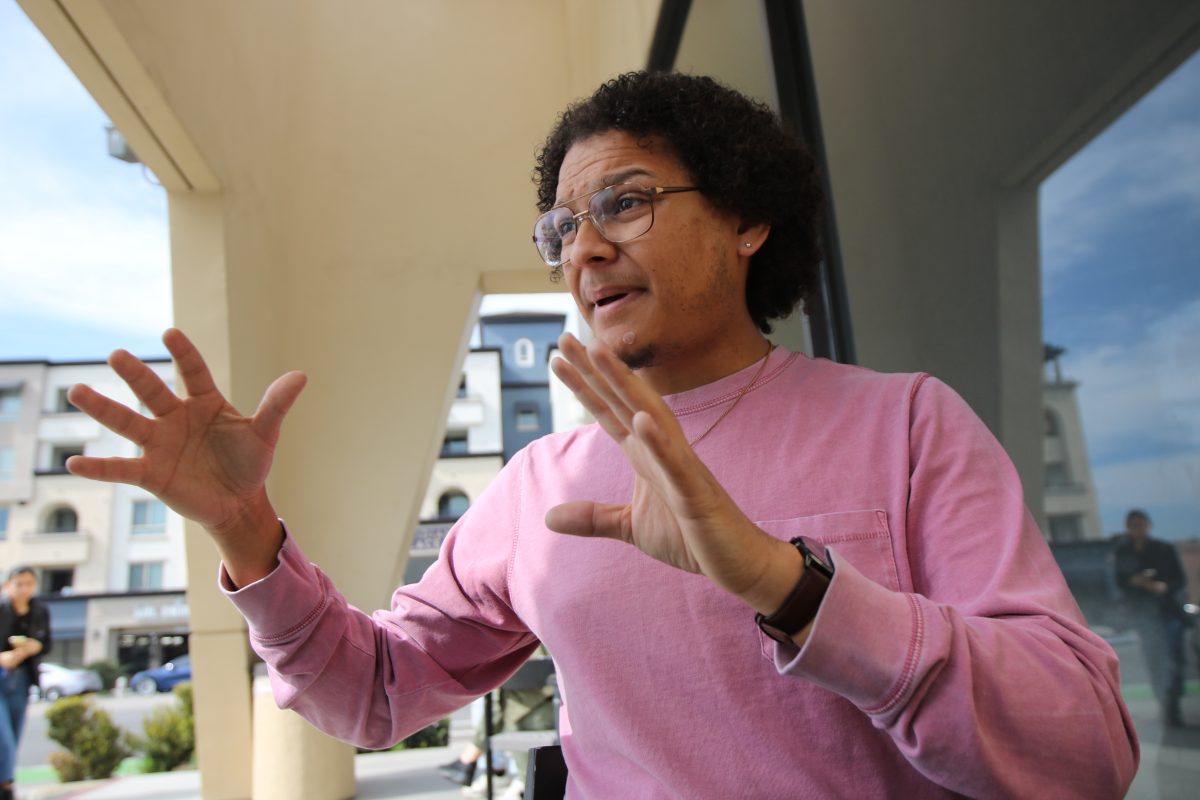
Waterless urinals across campus are helping CSUN save millions of gallons of water a year.
The water savings is approximately 40,000 gallons per year per urinal, said Lynn Wiegers, executive director of the Physical Plant Management (PPM).
“This equates to 10,800,000 gallons of water saved annually,” he said.
The university now saves between $50,000 to $75,000 per year in its annual water bill, Wiegers said.
“(The waterless urinals are) really efficient,” said Oscar Tamao, 18. “They save water like it says on the description above the urinal. I don’t see why you still use water ones if you can save much more water on the waterless.”
A major contributing factor of the cost savings and the water savings is the improved irrigation master control system installed at the same time as the waterless urinals, Wiegers said. The irrigation system senses the ground moisture and tells whether it needs water or not.
Another contributing factor is the new buildings on campus such as the Valley Performing Arts Center.
“As we installed the waterless urinals, new facilities came online, for example, Chaparral Hall,” Wiegers said. “So yes we save water, but they use water.”
Part of the reason the waterless urinals were installed is because PPM was part of a rebate program, Wiegers said.
“(PPM) received $128,000 in rebates and incentives for the project which covered 80 to 90% of the project’s cost,” Wiegers said.
Wiegers said Tom Brown, former executive director of PPM, waited until this technology developed. He added that Brown felt this was a cost effective solution and a good energy conservation project.
“There are times when (the Department of Water and Power) receive incentives either from the state or the federal government and they create these grant programs and they allow us to create some really cool things to lower our consumption of water and/or electricity,” Wiegers said.
He added that they are constantly looking for grants and rebates, especially as it relates to energy projects so they can stay ahead of the curve and of other universities by becoming more sustainable at what they do.
“I guess waterless urinals is the way to go, but it doesn’t seem like it’s working,” said Joseph Elias, Political Science major. “I think they could do more. I guess they’re trying; I give them that.”
Elias, 21, said other than waterless urinals, CSUN could be more of a papereless campus by using sites such as Moodle more.
Craig Cincis said it’s good that CSUN is thinking green by using waterless urinals and doing other things such as recycling and having professors print fewer pages for their classes.
Two thirds of the waterless urinals replaced the high volume water urinals that are 2 ½- 3 gallons per flush, about 160 or so of them. Eighty of those that the waterless urinals replaced were a gallon and a half per flush, Wiegers said.
The cost to remove the previous urinals is next to nothing, Wiegers said. It cost about a half hour to forty five minutes worth of labor per person, a total of about 100 hours.
“They kind of did a teamwork process so there would be a guy ahead taking one down and then there would be a guy behind hanging them back up and we did it over the holiday break at the end of 2009,” Wiegers said.
The low flush urinals PPM took out were kept to save even more on costs and water, Wiegers said.
“As urinals break or we have time, we take the low flush and put them in where there are high flush to try and save more and then the high flush or high volume flush urinals we recycle through a vendor,” Wiegers said.
The only problem Wiegers encountered was the odor that comes from the waterless urinals.
“We all have different levels of tolerance to aromas and some people are very sensitive,” Wiegers said. “We’re very aware of that so we have looked at a few ways of doing things differently. For example, in the men’s urinals we put a pad that has enzymes in it. The enzymes kill the bacteria that causes the odor from urine.”
Wiegers said they are also looking at different ways of cleaning them, such as putting a small amount of vinegar down each urinal a couple days a week as well as testing a new type of insert for urinals that allows the waste to go down into the drain.
“We just keep our ears open to calls and attempt to resolve the issue as quickly as possible,” Wiegers said.





